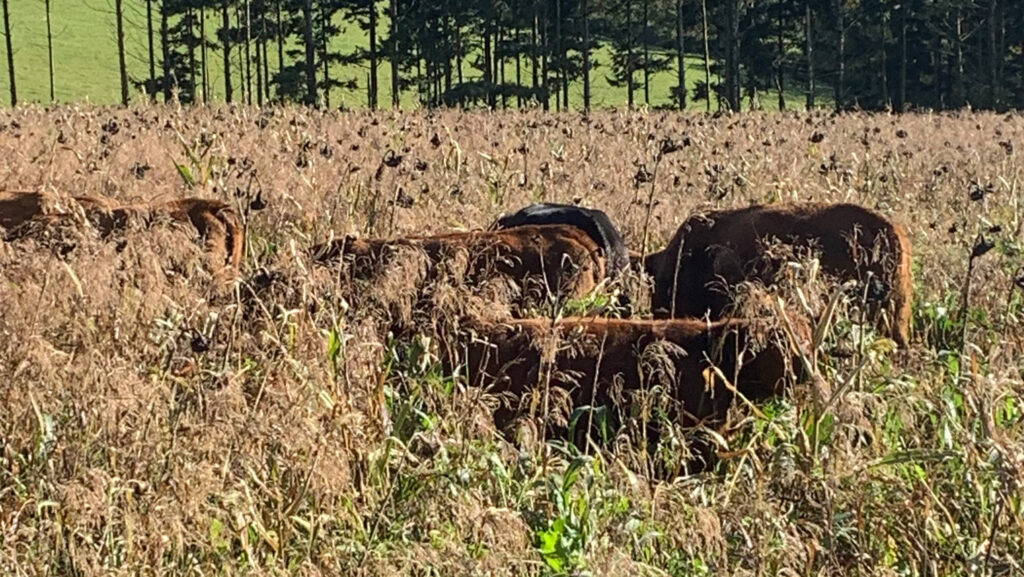Why winter bird food option stacks up for cattle grazing
 © Tom Armitage
© Tom Armitage Exmoor beef farmer Tom Armitage is making the most of payments for providing winter bird food under the Sustainable Farming Incentive.
By adding species to an off-the-shelf bird seed mix of cereals, grains and brassicas, he has a late winter/early spring feed lined up for his Stabiliser cattle that will also earn him £853/ha.
Speaking at Groundswell, Tom, who had been part of an Innovative Farmers field lab looking at diverse forage mixes, said he was keen to move away from using monoculture kale for winter grazing.
See also: Why diverse forage mixtures could improve outwintering
This was because of concerns about the negative impact of outwintering on such crops on soil health and water quality, as well as animal health and welfare, and biodiversity.
He told Farmers Weekly he sowed a similar crop last year, following the Innovative Farmers trial, but this is the first time he is chasing the Sustainable Farming Incentive (SFI) payment.
Seed mix
The wild bird food mix he has chosen contains spring wheat, spring barley, spring triticale, kale, fodder radish, white and red millet and quinoa.
To this he has added sorghum, Japanese millet, (more) kale, turnip, sunflower, plantain and Italian ryegrass.
The mix was sown in early May on 12.5ha (31 acres) and followed a similar mix sown last year. Total seed cost was £150/ha, compared with £65/ha for just kale.
Farm facts
Lower Brown Farm, Huish Champflower, Somerset
- 570ha organic upland farm
- 900 Stabilisers (270 cows plus followers)
- Cattle all finished off forage at 20-24 months
- 270 cattle outwintered; 730 housed
- Annual rainfall 1,500-2,000mm
However, Tom said that provided his cattle do not graze the crop until February (and the area does not cover more than 25% of the agricultural area of his farm), he is eligible for AHL2 payment of £853/ha under the SFI.
“The feed value will be declining by then, but we’ll be adding bales to manage that.
“Performance should be pretty similar [to deferred grass and bale grazing] – about 0.6kg/day is where we want to be, so the cattle hold their condition,” he said.
“How long we graze for will depend on how many bales we put out and how many cattle we put on, but I expect to graze until early April with about 100 cattle – mainly in-calf heifers.
“We’ll most likely strip graze – we ought to be cell grazing but we would need a bit more infrastructure to set up cells and move the water trough each day.”
Break crop
Wild bird food is a valuable break crop for four-to-five-year red clover leys that provide most of the farm’s forage.
“Bale grazing with deferred grass is better for soil health, but this is a tool in the rotation,” said Tom.
“Animal performance is more guaranteed on monoculture brassicas, but everything else is negative.
“With a diverse mix, the cattle are healthier, dung scores are better, the ground holds up better, so soil health [and] water infiltration [are] better; you don’t get run-off, and you’re feeding birds and pollinators,” he added.
Tom’s cattle will switch from deferred grass and bales onto the wild bird food, before moving onto the new season’s grass.
